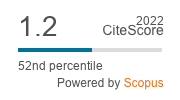El estudio del desarrollo motor: entre la tradición y el futuro
Palabras clave:
Desarrollo motor, competencia motriz, educación física,Resumen
La formación que en la actualidad se imparte en las Facultades de Educación y de Ciencias del Deporte coincide en considerar que el estudio del Desarrollo Motor forme parte de los componentes nucleares de la misma. En el presente artículo los autores hacen un repaso de lo que ha supuesto la evolución de esta subdisciplina del estudio del comportamiento motor, sus autores más relevantes, enfoques teóricos y su significado para le educación física y el deporte. No siendo un ámbito de larga tradición, sin embargo presenta toda una serie de peculiaridades que lo hacen activo y dinámico, que permite la compresión de cómo los seres humanos desde el nacimiento hasta la muerte evolucionan y cambian, de cómo emergen sus competencias motrices y de los factores que las afectan. En definitiva defiende la necesidad de que esta materia forme parte de la formación de grado de todos aquellos que van a dirigir sus esfuerzos profesionales en la mejora y el cultivo de la competencia motriz y deportiva.
Descargas
Citas
BALTES, P.B.; REESE, H.W.; NESSELBROADE, J.R. (1981): Métodos de investigación en Psicología Evolutiva: Enfoque del ciclo vital. Madrid, Morata
BARSCH, R.H. (1965): Acheiving perceptual-motor efficiency. A space oriented approach to learning. Seattle, Special Child Publications.
BERNSTEIN, N. (1967): The co-ordination and regulation of movement. New York, Pergamon Press.
BRUININKS, R.H. (1978): Bruininks-Ozeretsky test of motor proficiency. American Guidance Service. Circle Pines, Minnesota.
BRUNER, J. (1973): “Organization of early skilled actions”, en Child Development, 44, pp.1-11.
BURNSIDE, L.H. (1927): “Coordination in the locomotion of infants”, en Genetic Psychology Monographs, 2, pp. 283-340.
CASTELL, T. (2007): Emmi Pikler: El desenvolupament motor autònomon des del naiximent fins a la seguretat de les primers passes. Tesis doctoral inédita. Barcelona: Universidad de Barcelona.
CLARK, J.E.; WHITHALL, J. (1989): “What is motor development? The lessons of the history”, en Quest, 41, pp. 183-202.
CLARK, J.E.; HUMPREYS, J.H. (eds.) (1987): Advances in Motor Development Research. Vol. 1. New York, AMS Press.
(1988): Advances in Motor Development Research. Vol. 2. New York, AMS Press.
(1990): Advances in Motor Development Research. Vol. 3.. New York, AMS Press.
CONNOLLY, K. (1970): Mechanism of motor skill development. London, Academic Press.
CRATTY, B.J. (1970): Movement activities, motor ability and the education of children. Springfield, Il., Charles C. Thomas.
CRUZ, J.; CANTÓN, E. (1992): “Desarrollo histórico y perspectiva de la Psicología del Deporte en España”, en Revista de Psicología del Deporte, 1, pp. 53-61.
DEARBORN, G. (1910): Moto-sensory development: Observations on the first three years of a child. Warnick, Baltimore.
DELACATO, C.; DOMAN, G. (1959): Treatment and prevention of reading problems. Springfield, Il., Charles C. Thomas.
DENNIS, W. (1935): “The effect of restricted practice upon reaching, sitting and standing in two infants”, en Journal of Genetic Psychology, 47, pp. 17-32.
DEL VAL, J.; GOMEZ, J.C. (1988): “Dietrich Tiedmann: La psicología del niño hace doscientos años”, en Infancia y Aprendizaje, 41, pp. 9-30.
DIEM, L. (1978): Ejercicios de psicomotricidad infantil. Madrid, Publicaciones ICCE.
ESPENSCHADE, A.; ECKERT, H. (1980). Motor development. Columbus, Charles C. Merrill. hoed.
FROSTIG, M. (1970): Movement Education-Theory and Practice. Chicago, Follet Educational Co.
GALIFRET-GRANJON, N. (1991): Nacimiento y evolución de la representación en el niño. Méjico, Trillas.
GESELL, A. (1928): Infancy and human growth. New York, McMillan & Co.
GESELL, A.; THOMPSON, D. (1929): “Learning and growth in identical infants twins. An experimental study by method of co-twin control”, en Genetic Psychology Monographs, 6, pp. 1-124.
(1934): Infant behavior. Its genesis and growth. McGraw-Hill, New York.
GETMAN, G.N. (1952): How to develop your child's intelligence. Luverne, A Research Publication.
GIBSON, E.; SCHMUCKLER, M.A. (1989): “Going somewhere: an ecological and experimental to development of mobility”, en Ecological Psychology, 1, pp. 3-25.
GUILMAIN, E. ; GUILMAIN, G. (1981): Evolución psicomotriz del nacimiento a los 12 años. Barcelona, Médica-Técnica.
GUTTERIDGE, M.V. (1939): “A study of motor achievement in young children”, en Archives of Psychology, 244, pp. 1-178.
HELLEBRANDT, F.A.; RARICK, G.L. GLASSOW, R.; CARNS, M.L. (1961): “Physiological analysis of basic motor skills I. Growth and development of jumping”, en American Journal of Physical Medecine, 40, pp. 14-25.
HOPKINS, B.,,BEEK, P.J.; KALVERBOER, A.F. (1993): Theoretical issues in the longitudinal study of motor development. En A.F.
KALVERBOER, HOPKINS, B. ; GEUZE, R. (ed.) Motor development in early and later childhood: Longitudinal approaches. (pp. 343-371).Cambridge, Cambridge University Press.
JUARROS, C. (1936): “Pautas Oseretzky para valorar el desarrollo motor”, en Medicina Latina, IX, 101, pp. 347.
(1939). “Valor práctico de las pruebas colectivas de Oseretzky para la determinación de la edad motora” en Psicotecnia, 1, pp. 40-60
(1941).El nivel motórico. Madrid, Morata.
KAVALE, K.; MATTSON, P.D. (1983): "One jumped off the balance beam: Meta-analysis of perceptual-motor training”, en Journal of Learning Disabilities, 16, pp. 165-173.
KELLER, J. (1992) : Activité physique et sportive et motricité de l’enfant. Paris, Vigot.
KELSO, J.S.A.; CLARK, J. (1982). The development of movement control and co- ordination. New York, J. Wiley.
KEOGH, J. (1977): “The study of movement skill development”, en Quest, 28, pp. 76-88.
KEPHART, N. (1972): El alumno retrasado. Barcelona, Louis Miracle
KIPHARD, E. J. (1975) : “Curriculumentwurtf zum Fachstudium der Psychomotorik und Motologie”, en Sportunterricht, vol. 24,11, pp. 364-368.
(1976): Insuficiencias de movimiento y coordinación en la edad de la escuela primaria. Buenos Aires, Kapelusz.
KIPHARD, E.; HUPPERTZ, H. (1968): Erziehung durch Bewegung. Germany : Durr. Bed Godesberg.
LASZLO, J.; BAIRSTOW, P.J. (1985): Perceptual-motor behavior. Developmental assessment and therapy. New York, Praeger.
LE CAMUS, J. (1988): Les origines de la motricité chez l’enfant. Paris, PUF.
LE BOULCH, J. (1972): La educación por el movimiento. Buenos Aires, Paidós.
(1978): Hacia una Ciencia del Movimiento Humano. Buenos Aires, Paidós.
LINAZA, J.L. (Comp.) (1984): J. Bruner: Acción, pensamiento y lenguaje. Madrid, Alianza-Psicología.
MCGRAW, M. (1940): “Neural maturation as exemplified in achievement of bladder control”, en Journal of Pediatrics, 16, pp. 580-590.
(1946): Maturation of behavior. En L.CARMICHAEL (ed.) Manual of child psychology. (pp. 332-369). Wiley, New York.
MEKOTA, K. (1986): Seminario de la ontogénesis de la motricidad en el hombre. Acta Unversitatis Palackianae Olomucensis, Facultad Paedagogica, Gymnica XVI, 5, 159- 182 (Traducciones Técnico-Deportivas I, INEF, 1991-92).
NEWELL, K.M. (1991): “Motor skill acquisition”, en Annual Review of Psychology, 42, pp. 213-237.
NEWELL, K.M.; VAN EMMERIK, R.E.A. (1990): Are Gesell’s developmentl principles general principles for the acquisition of coordination?. En J.E. CLARK ; J.H. HUMPHREY (eds.) Advances in Motor Development Research. Vol. 3. (pp. 143- 164). New York, AMS Press.
OZERETSKY, N.A. (1948): “A metric scale for studying the motor capacity of children in Rusia”, en Journal of Clinical Psychology, 12, pp. 37-47.
PREYER, W. (1909): The mind of the child. Part I. The senses and the will. Appleton, New York.
RIGAL, R. (1976) : Le developpement psychomoteur de l'enfant et ses relations avec les apprentissages scolaires. Tesis Doctoral no publicada, Universidad de Montreal.
ROBERTON, M.A. (1972): “Developmental kinesiology”, en Journal of Health, Physical Education and Recreation, 43, pp. 65-66.
ROSENGREN, K.S.; SAVELSBERGH, G.J.P.; VAN DER KAMP, J. (2003): “Development and learning: a TASC-based perspective of the acquisition of perceptual-motor behaviors”, en Infant behavior & Development, 26, pp. 473-494.
RUIZ, L.M. (1987): Desarrollo Motor y Actividades Físicas. Madrid, Gymnos.
RUIZ, L.M. (2005): Moverse con dificultad en la escuela. Sevilla, Wanceulen.
RUIZ, L.M.; NAVARRO, F.; GRAUPERA, J.L.; GUTIERREZ, M.; LINAZA, J.L. (2001): (comp.): Desarrollo, Comportamiento Motor y Deporte. Madrid, Síntesis.
RUIZ, L.M.; GRAUPERA, J.L.; GUTIÉRREZ, M.; MAYORAL, A. (1997): Problemas evolutivos de coordinación y resignación aprendida en educación física escolar. Memoria de investigación no publicada. Madrid, CIDE, Ministerio de Educación y Cultura.
RUIZ, L.M.; GÓMEZ, M.; GRAUPERA, J.L.; GUTIÉRREZ, M.; LINAZA, J.L. (2007): “A quantitative análisis of the fith section of the Henderson and Sudgen’s Movement ABC Checklist”, en International Journal of Special Education, 22, 2, pp. 77-85.
RUIZ, L.M.; MATA, E.; MORENO, J.A. (2007): “Los problemas de coordinación motriz y su tratamiento en la edad escolar: estado de la cuestión”, en Internacional Journal of Human Movement/Motricidad, 18, pp. 1-17.
SAVELSBERGH, G.; DAVIDS, K.; VAN DER KAMP, J.; BENNETT, S.J. (2003): Development of movement co-ordination in children. London, Rutledge.
SCHILLING, F. (1978): Normal and pathological development of motor behavior. En J. DE POTTER (Ed.): Psychomotor Learning. International Congress of Psychomotor Learning. (pp. 237-248). Bruxelles, Editions de l’Université de Bruxelles.
SHINN, M. (1900): Biography of a baby. Houghton Mifflin, Boston.
SLOAN, W. (1955): “The Lincoln-Oseretsky motor development scale”, en Genetic Psychology Monograph, 51, pp. 183-252.
SMOLL, F. (1982): Developmental kinesiology: Towards a subdiscipline focusing on motor development. En J.A.S. KELSO; J. CLARK (Eds.): The development of movement control and co-ordination. (pp. 319-354). New York, Wiley and sons.
SUDGEN, D.; KEOGH, J. (1990): Problems in movement skill development. Columbia, University of South Carolina Press.
THELEN, E. (1987): The role of motor development in developmental psychology : A view from the past and an agenda for the future. En N. EISENBERG (Ed.): Contemporary topics in developmental psychology. (pág.3-33). New York, Wiley and Sons.
THELEN, E.; FISHER, D.M. (1983): “The organization of spontaneous leg movements in newborn infants”, en Journal of Motor Behavior, 15, pp. 353-377.
THELEN, E.; NILES, D. (1990): Perceptual determinants of actino: Stair climbing choices of infants and toddlers. En J.E. CLARK; J.H. HUMPHREY (Eds.): Advances in Motor Development Research. Vol. 3. (pp. 1-17). New York: AMS Press.
TIEDMAN, D. (s/f): El desarrollo de las facultades espirituales del niño. La Cultura, Madrid.
ULRICH, B. (2007): “Motor Development: Core Curricular Concepts”, en Quest, 59, pp. 77-91.
VOGT, W. (1979): Estimulación del movimiento. Madrid, Interduc/Schroedel Preescolar.
WADE, M.; WHITING, H.T.A. (1986): Motor development: Aspects of control and co-ordination. Amsterdam, Martinus Nijhoff.
WALLON, H. (1928) :La maladresse·, en Journal de Psychologie, 1
(1929): «La habilité manuelle, en Revue de la Science du Travail, Juin.
(1932): Syndromes d'insuffisance psychomotrice et type psychomoteurs, en Annales medico-psychologiques, 4.
WHITALL, J. (1995): “The evolution of research on motor development: New appraches bringing new insights”, en Exercise and Sport Sciences Review, 23, pp. 243-273.
WICKSTROM, R. (1990): Patrones motrices básicos. Madrid, Alianza Deporte.
ZANONE, P.G.; HAUERT, C.A. (1987): “For a cognitive conception of motor processes. A provocative standpoint”, en Cahiers de Psychologie Cognitive, European Bulletin of Cognitive Psychology, 7, (2), pp. 109-129.
ZAPOROJET, A. (1948/1987): Estudio psicológico del desarrollo de la motricidad en la edad preescolar. En AAVV Antología: La Psicología evolutiva y pedagógica en la URSS. Moscú, Ed. Progreso
Descargas
Cómo citar
Número
Sección
Licencia
Revista Fuentes brinda acceso abierto inmediato a todo su contenido sobre el principio de que hacer que la investigación esté disponible de forma gratuita para el público para apoyar un mayor intercambio global del conocimiento.
De esta manera, el lector puede acceder a todos los contenidos de la revista desde el momento de la publicación sin coste ni obligación de suscripción.
Salvo indicación contraria, los artículos publicados en Revista Fuentes tienen licencia bajo el acuerdo de licencia internacional Attribution-NonCommercial-ShareAlike 4.0 International (CC BY-NC-SA 4.0). Los autores retienen los derechos de autor y se permite a terceros copiar, distribuir y hacer uso de los trabajos siempre que cumplan con los términos y condiciones establecidos por dicha licencia
- citar la autoría y la fuente original de su publicación (revista, editorial y URL de la obra).
- No se usen para fines comerciales.
- Si remezcla, transforma o crea a partir del material, deberá difundir sus contribuciones bajo la misma licencia que el original.
Puede encontrar más información al respecto en https://creativecommons.org/licenses/by-nc-sa/4.0/deed.es.
En el caso de trabajos publicados bajo una licencia diferente a la anteriormente mencionada (CC BY-NC-ND o CC BY-NC) los autores retienen los derechos de autor, permitiéndose su copia, distribución y uso de los trabajos siempre que cumplan con los términos y condiciones de la licencia correspondiente. Puede encontrar más información al respecto en https://creativecommons.org/licenses/?lang=es.
Aceptado 2016-03-04










